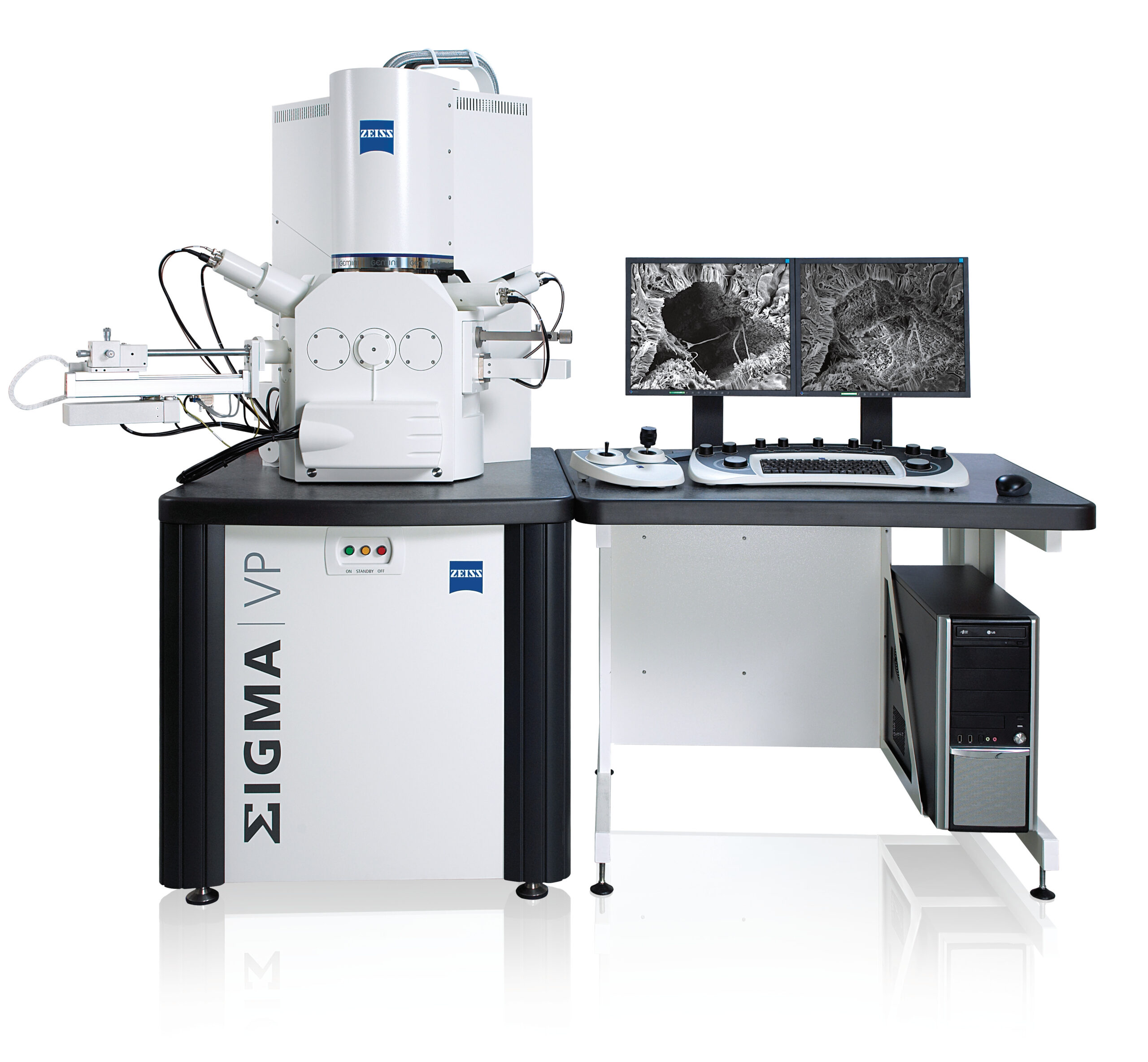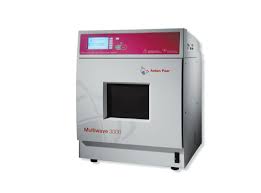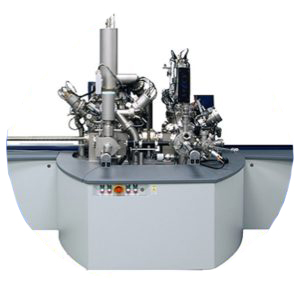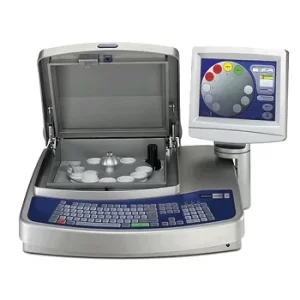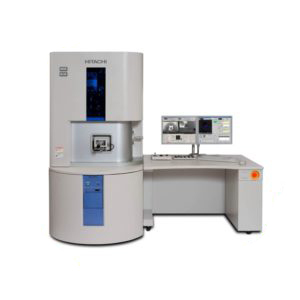Description
Field Emission Scanning Electron Microscopy (FESEM) with EDS, Mapping, Line Scan, and EBSD Analysis (Germany-made Equipment)
A comprehensive microstructural and compositional analysis was performed using Field Emission Scanning Electron Microscopy (FESEM), equipped with Energy Dispersive X-ray Spectroscopy (EDS), elemental mapping, line scan profiling, and Electron Backscatter Diffraction (EBSD) capabilities. All analyses were conducted using a high-resolution FESEM system manufactured in Germany, known for its precision and advanced analytical attachments.
1. FESEM Imaging:
FESEM provides high-resolution surface imaging by scanning a focused electron beam across the sample and detecting the secondary or backscattered electrons emitted. Due to the use of a field emission electron source, FESEM offers excellent resolution (typically <1 nm) and depth of field, making it ideal for observing fine surface features, nanostructures, grain morphology, and fracture surfaces.
-
Discussion of Results: FESEM images can be used to analyze surface topography, particle size, porosity, crack propagation, grain boundaries, and interface characteristics. Depending on magnification, morphological differences between samples can be quantitatively and qualitatively compared.
2. EDS (Energy Dispersive X-ray Spectroscopy):
EDS is an elemental analysis technique integrated with FESEM. When the electron beam interacts with the sample, it generates characteristic X-rays from the elements present. EDS identifies and quantifies these elements.
-
Elemental Mapping: This provides a spatial distribution of elements across a selected area. Each element is color-coded to visualize its presence and concentration.
-
Line Scan (Line Profiling): This technique measures the elemental composition along a specific line or path, allowing analysis of elemental gradients or interfaces.
-
Discussion of Results: EDS mapping and line scans can be used to verify elemental uniformity, detect impurities, assess phase distribution, and confirm compositional transitions across interfaces or layers. For example, diffusion profiles, segregation, or elemental partitioning in multiphase systems can be discussed using these results.
3. EBSD (Electron Backscatter Diffraction):
EBSD is a crystallographic technique that analyzes the diffraction patterns formed by backscattered electrons interacting with the crystal lattice of a sample. This provides detailed information about:
-
Crystallographic orientation (texture)
-
Grain size and grain boundary character
-
Phase identification
-
Strain and dislocation density
-
Discussion of Results: EBSD data is typically presented as orientation maps (IPF maps), phase maps, or boundary maps. Researchers can discuss texture evolution, recrystallization behavior, preferred orientations, grain refinement, and deformation mechanisms. EBSD is particularly valuable in metallurgy, ceramics, and materials science for understanding structure-property relationships.
Nature of Materials Analyzed Using FESEM, EDS, and EBSD
The FESEM system, combined with EDS and EBSD capabilities, is highly versatile and can analyze a wide range of materials across multiple disciplines. Here’s a breakdown by material type:
1. Metals and Alloys
-
Applications: Microstructure, grain boundaries, phase distribution, elemental segregation, texture (crystallographic orientation), and failure/fracture surfaces.
-
EDS/EBSD Use: Composition verification, phase mapping, and crystallographic texture analysis.
2. Ceramics and Oxides
-
Applications: Grain size, porosity, sintering behavior, phase purity, and grain orientation.
-
Challenges: Non-conductivity (see sample prep below), possible charging effects.
3. Semiconductors
-
Applications: Device layer structure, dopant distribution (EDS), crystal orientation (EBSD), defect analysis.
-
Note: Beam-sensitive; requires low kV imaging or cryo-stage in some cases.
4. Polymers and Composites
-
Applications: Morphology, filler dispersion, fracture surfaces.
-
Limitations: EDS and EBSD are less effective unless conductive fillers are present. Polymers are non-conductive and beam-sensitive.
5. Geological and Mineral Samples
-
Applications: Mineral composition, texture, microstructures, phase identification.
-
EDS Use: To distinguish between chemically similar mineral phases.
6. Thin Films and Coatings
-
Applications: Layer thickness, interface analysis, elemental diffusion, grain growth in thin films.
-
Line scan useful for profiling across film-substrate interfaces.
Sample Shape and Preparation Requirements
FESEM-EDS-EBSD requires careful sample preparation to obtain high-quality data. Here’s a breakdown:
Sample Shape and Size
-
Typical size: Small, flat specimens; usually less than 1 cm².
-
Thickness: Must be suitable for mounting—typically less than a few millimeters.
-
Shape: Flat and polished surfaces are preferred, especially for EBSD, which requires highly planar surfaces for accurate pattern generation.
Mounting
-
Samples are typically mounted on aluminum stubs using conductive adhesives (e.g., carbon tape or silver paste).
-
Cross-sectioned samples can be mounted in resin for edge analysis.
Sample Conditions Required
1. Conductivity
-
Conductive samples (e.g., metals) can be directly analyzed.
-
Non-conductive samples (e.g., ceramics, polymers) must be coated with a thin layer of conductive material (usually gold, platinum, or carbon) to avoid charging under the electron beam.
-
Low vacuum or variable pressure SEM modes can be used for uncoated, non-conductive samples, but may reduce resolution.
2. Cleanliness
-
Samples must be free of oils, dust, or loose particles. Ultrasonic cleaning or plasma cleaning is often used.
-
Contaminants can distort EDS results and degrade EBSD patterns.
3. Surface Finish
-
For EBSD: A mirror-like finish is essential, achieved via mechanical polishing followed by colloidal silica final polishing (≤0.05 µm).
-
For general FESEM imaging, a clean fracture surface or mechanically prepared surface may suffice.
4. Stability
-
Samples should be stable under vacuum (not outgas or decompose).
-
Beam-sensitive materials (e.g., polymers or hydrated materials) may require cryogenic stages or low electron beam energy.
-

